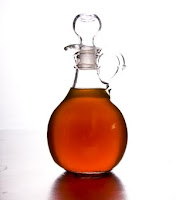NOTE: This demonstration needs adult supervision.
What we need:
- rice,
- a plastic jar, we used a baby's bottle,
- a knife,
- resistant surface, like a kitchen counter,
- patience and a broom.

- Fill the jar with rice;
- Plunge the knife "halfway" into the rice a few times; it's easier if you lean the jar 5 or 6º;
- Fill the jar again, repeat the process;
- With a fast and clean hit, jab the knife up to the hilt into the rice, be careful with your hands, an adult must supervise this step;
- Pull the knife straight up.
The jar comes up with the knife.
Why?
The force of pressure can overcome the force of gravity.

The preliminary stabs made rice grains to settle in close to each other. Thousands of rice grains surrounded the knife when we plunged it halfway, after each stab, the grains got closer and closer.
In the last step we pulled the knife straight up into the settled in rice, the knife is sharp enough to be jabbed into this network of pressure, but at same time the rice settles back in from all sides to hold the knife in place.
Please Note:

It's normal if you have to repeat several times the steps above until you have success. Persistence is the key; you may try to change the knife or the container.
This demonstration can be an experiment, or a science fair project:
- Change the container, different volume, high...;
- Change the knife width, length, or material....;
- Change the rice; use other grains, sugar, salt, sesame seeds, sand...

Record the weights of the containers with and without rice, record the width / length of the knife and all the variables of your essay.
Et Voilá!
Unbelievable!
Enjoy!
Resources:
Connolly, Sean, "The book of totally irresponsible science", 2008













































